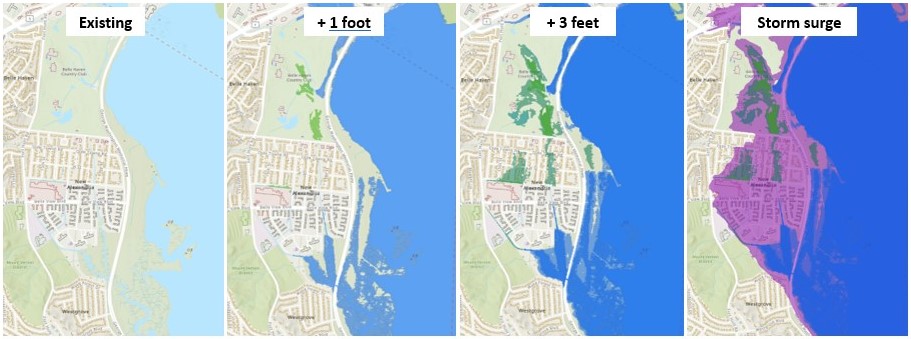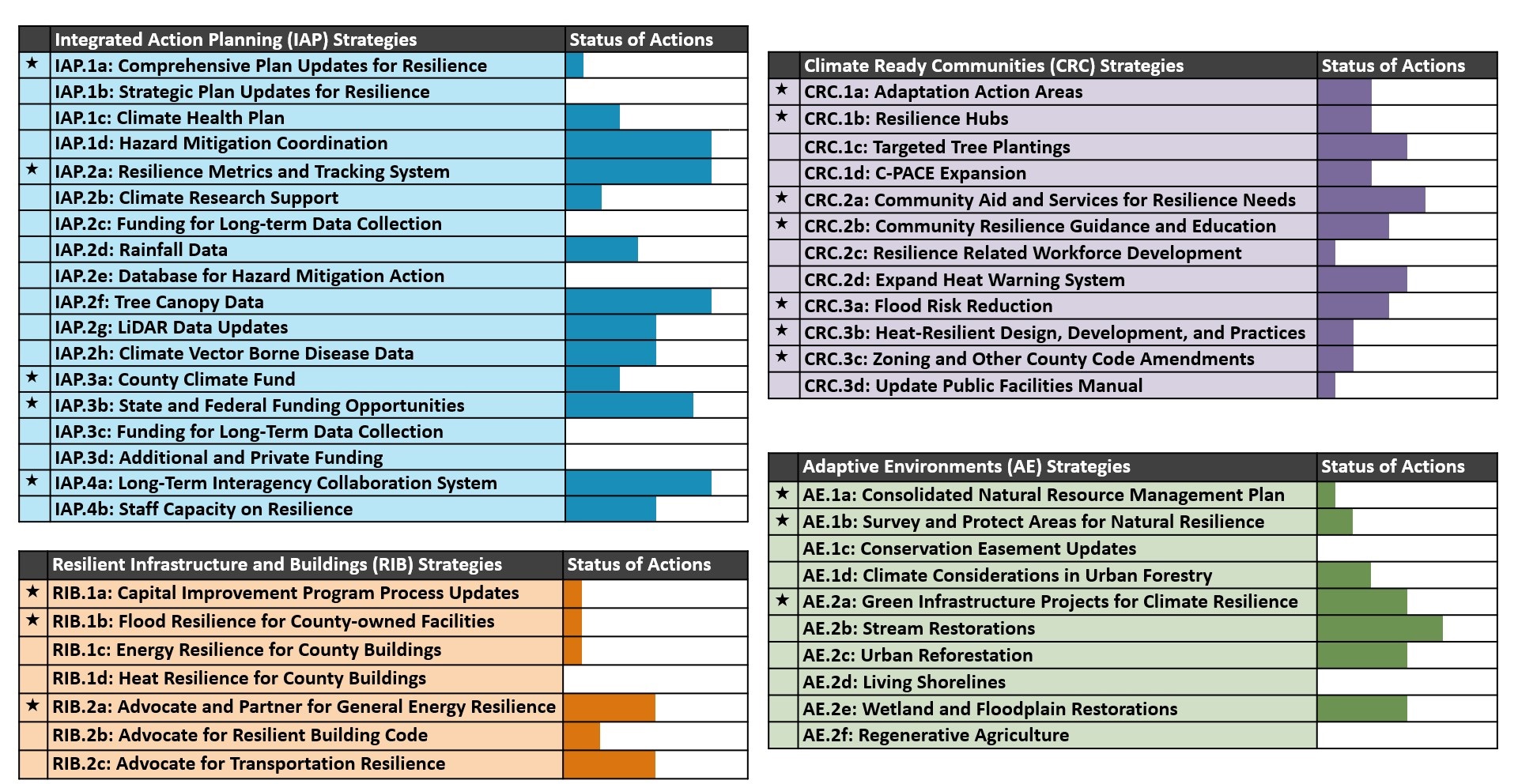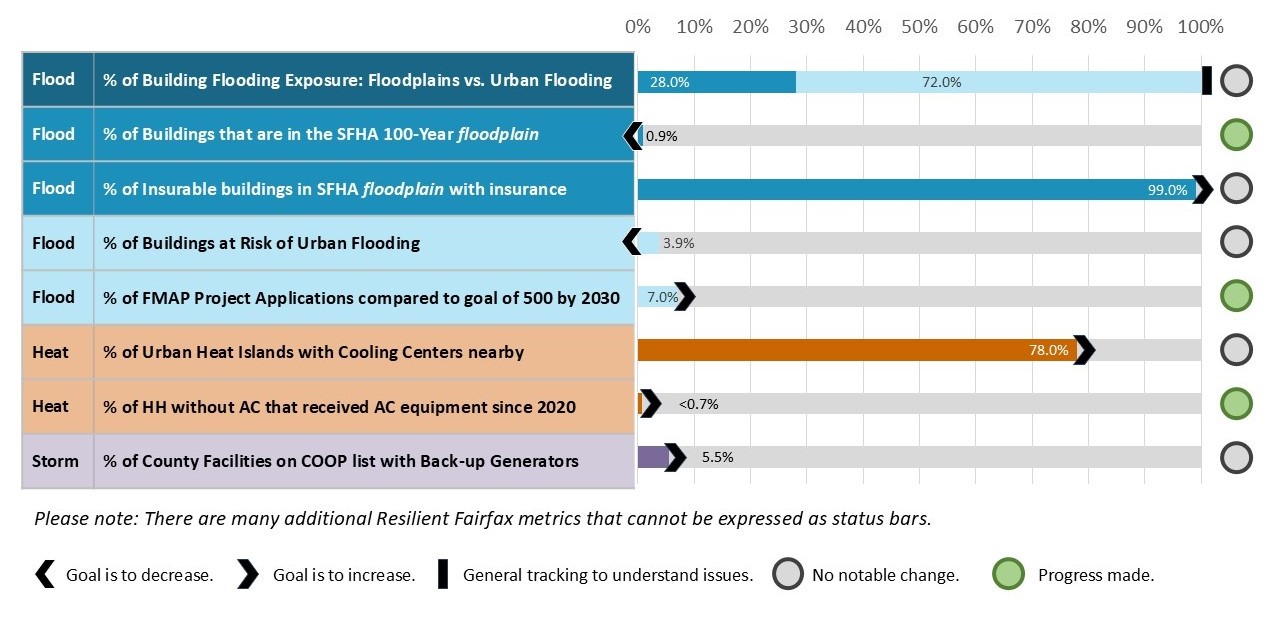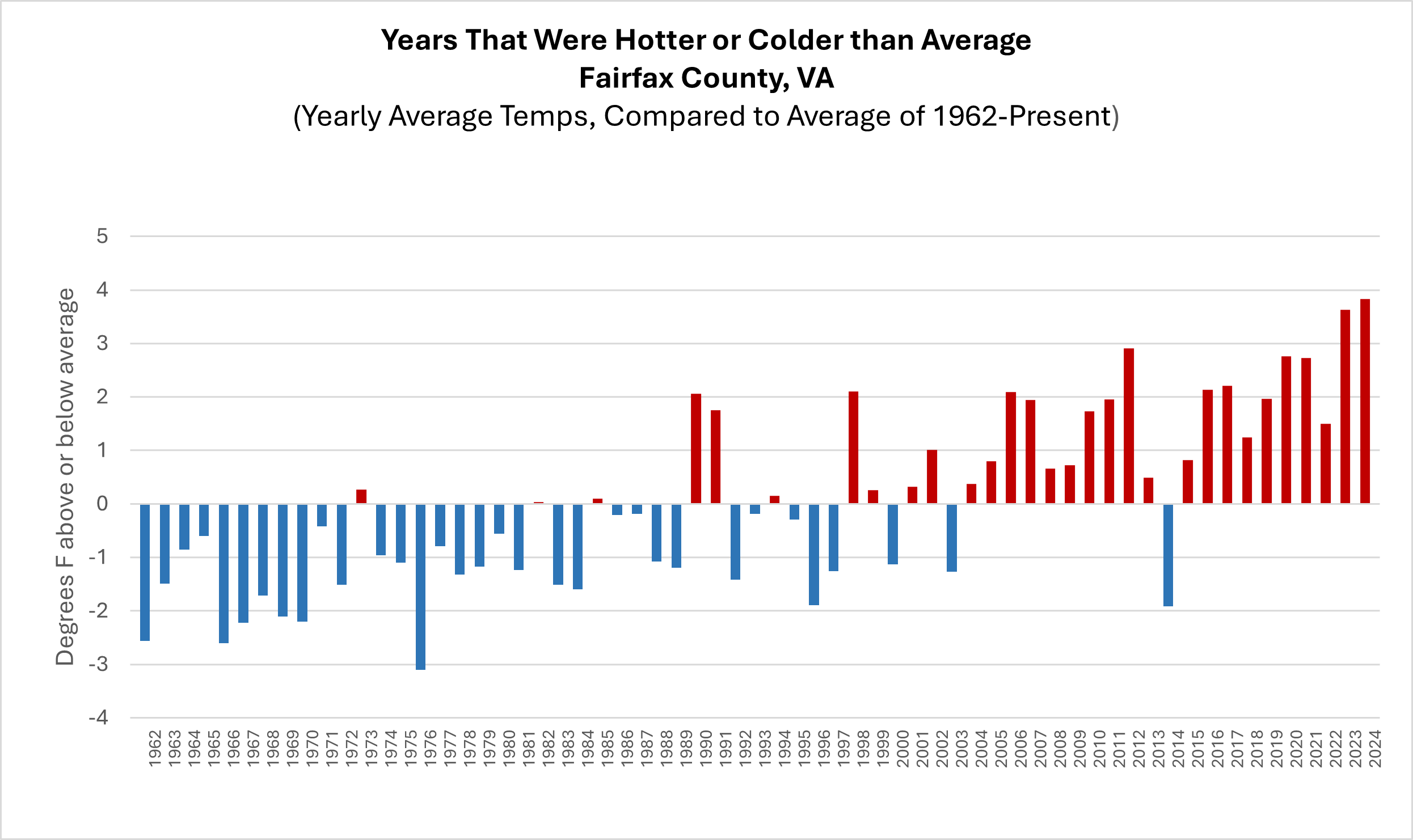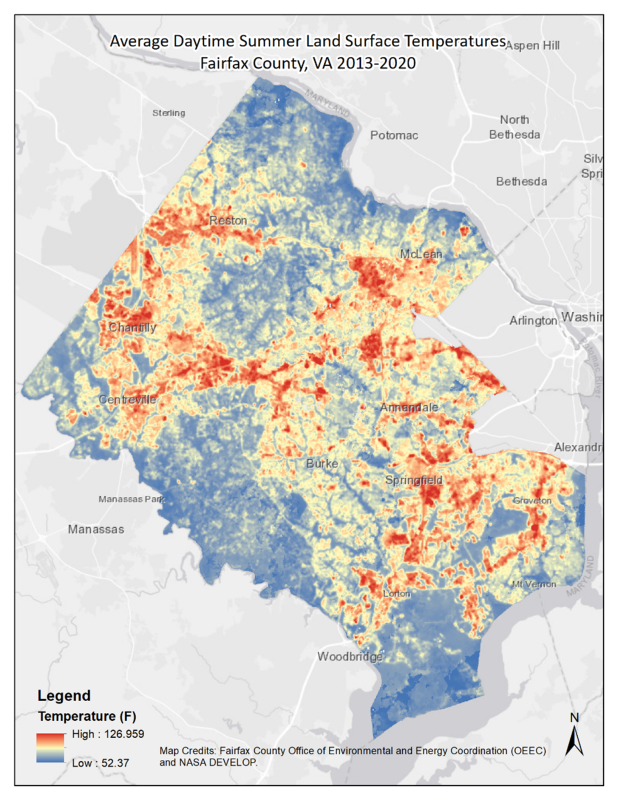Wetter
Precipitation Intensity:
In Fairfax County, the intensity of precipitation has increased (i.e., it is raining harder than it used to). While the total amount of rain the county receives per year has been fairly consistent*, we are receiving this rain in heavier, shorter downpours and flash flood events. This intense rain causes flooding because our infrastructure and natural systems are not designed to handle such high volumes all at once. The Department of Public Works and Environmental Services (DPWES) is the primary agency responsible for stormwater management. For more information, please see Stormwater Management.
*The total quantity of precipitation received by the county per year has increased slightly. However, the bigger change is the increase in intensity of precipitation.
The figure below shows the number of flash flood events in Fairfax County between 1996 and 2024, as tracked by the National Oceanic and Atmospheric Administration (NOAA) National Centers for Environmental Information Storm Events Database. There is wide variation in these events, but they are generally increasing in frequency over time.
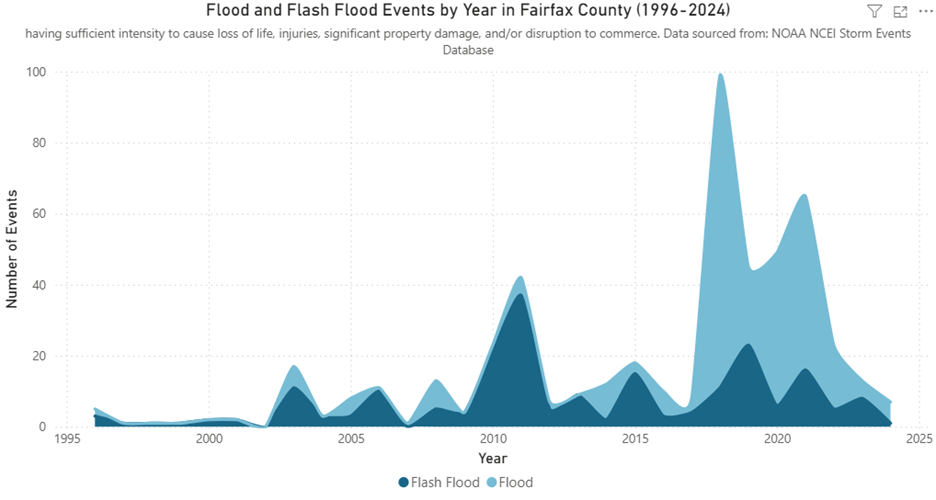
We measure precipitation by intensity, duration, and frequency (or “IDF curves”). As can be seen in the chart below, using data from MARISA, the IDF curve for our area is shifting. The historic IDF curve is the lower line shown in red. The projected IDF curve is the higher line, shown in blue. This means that it is raining harder than it used to.

Flooding Types:

Fairfax County experiences a few different types of flooding. The map shown above, which is from the Resilient Fairfax Vulnerability and Risk Assessment, shows different types of flooding in Fairfax County.
- Floodplain or riverine flooding occurs when water bodies overflow onto their banks. Approximately 2,215 buildings (or 0.9% of buildings) in Fairfax County are in FEMA Special Flood Hazard Area (“100 year”) floodplains. Floodplains in the map are shown in yellow.
- Coastal flooding in Fairfax County refers to flooding of the Potomac River and associated tidal water bodies as a result of sea level rise, high tide, storm surge, or a combination thereof. Approximately 699 buildings (or 0.3% of buildings) are vulnerable to coastal flooding in Fairfax County. Coastal flooding in the map is shown in red. In this map, “SLR” refers to projected sea level rise of 1 foot and 3 feet, respectively. “Cat 1&2” and “Cat 3&4” refers to Category 1, 2, 3, and 4 storm surges that could push water onshore.
- Urban or pluvial flooding occurs when heavy rain overwhelms stormwater management systems, pools in low-lying areas (sumps), cannot sink into the ground, or is blocked from reaching waterways (overland relief paths blocked). The exact number of structures vulnerable to urban flooding in Fairfax County varies by storm and type but is consistently higher than those vulnerable to floodplain flooding. As of 2021, over 97% of flooding-related service requests were not in floodplains. (See Resilient Fairfax Vulnerability and Risk Assessment). Potential urban flooding of various types is shown in the map and graph in blue.
Sea Level Rise and the Potomac River:
“Coastal flooding” in Fairfax County refers to flooding of the Potomac River and associated water bodies due to tidal flooding, sea level rise, coastal storm surge, or a combination of all three. Tides are measured with tide gauges. The nearest tide gauge is located in Washington DC. Since 1920, this area has already experienced an increase in sea level rise of 0.135 inches per year, or 13.56 inches over the past century. This water level is projected to increase by an additional 1 to 3.5 feet by 2050. There are approximately 699 buildings in Fairfax County that are vulnerable to this projected coastal flooding.
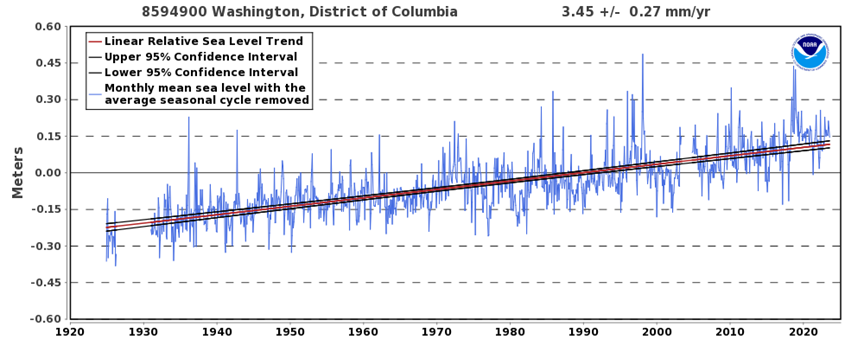
The figure below shows an example of a few neighborhoods that are especially vulnerable to flooding of the Potomac River (New Alexandria, Belle Haven, and Westgrove). From left to right, the images show existing conditions, additional projected sea level rise of 1 foot, additional projected sea level rise of 3 feet, and coastal storm surge (where the water goes if a severe tropical storm or hurricane pushes it on shore). These images are taken from the Resilient Fairfax Interactive Map Viewer.
